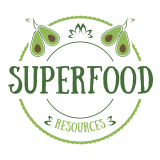Top 10 Superfoods for Sustainable Living
Introduction
Welcome to the world of superfoods that not only contribute to a healthier you but also promote sustainable living. In today’s fast-paced world, making conscious choices about what we eat is more important than ever, not only for our health but also for the health of our planet. This blog explores ten fantastic superfoods that are as good for the earth as they are for your body. So, let’s dive into the delicious and eco-friendly options that can be part of your daily diet.
Benefits of Superfoods for Sustainable Living
Superfoods are more than just a trendy staple for the health-obsessed; they’re a cornerstone for anyone serious about integrating sustainability and well-being into their life. As the world tilts more towards sustainability, understanding how superfoods can foster both healthier lives and a healthier planet becomes crucial.
Health benefits of superfoods
Integrating superfoods into your diet can yield extensive health benefits. These foods are typically packed with vitamins, minerals, antioxidants, and other essential nutrients that our bodies need to function optimally. Here are some evident health benefits:
– Enhanced Immunity: The abundance of antioxidants in superfoods helps in boosting the immune system significantly. Foods like blueberries, kale, and acai are high in vitamins C and E, which can help ward off illnesses.
– Improved Heart Health: Many superfoods contain heart-friendly omega-3 fatty acids, fibers, and healthy fats, which contribute to maintaining balanced cholesterol levels and improving cardiovascular health. Some heart-boosting superfoods include salmon, avocados, and chia seeds.
– Weight Management: Given their high fiber and protein content, superfoods are often an integral part of weight management diets. These nutrients help in maintaining satiety, which reduces overall calorie intake by curbing cravings and overeating.
– Antiaging Benefits: Superfoods like pomegranates and blueberries are famed for their antiaging properties. They help in combating free radicals in the body, which can mitigate the aging process and enhance skin health.
These benefits highlight why incorporating superfoods into one’s diet is not just a luxury but a necessary step towards sustained health.
Environmental benefits of consuming superfoods
While the health advantages of superfoods are widely recognized, their environmental benefits are equally compelling. Some of the key environmental benefits include:
– Reduced Carbon Footprint: Opting for plant-based superfoods like quinoa, lentils, and hemp seeds can significantly lower our carbon footprint. Meat-based diets are typically resource-intensive, whereas plant-based foods require less land, water, and energy.
– Support for Biodiversity: Many superfoods like chia and amaranth are grown in a variety of ecological conditions and promote agricultural diversity. Their cultivation can help maintain soil fertility and reduce dependency on mono-crop agriculture, which often leads to biodiversity loss.
– Encouragement of Sustainable Farming Practices: Superfoods often encourage organic and regenerative farming practices that are less reliant on chemical pesticides and fertilizers, promoting healthier soil and ecosystems.
These environmental advantages underscore the importance of choosing superfoods if we aim to foster a more sustainable world.
Criteria for Selecting Superfoods
Adopting superfoods into your lifestyle requires some discernment. Here are crucial criteria to consider when selecting superfoods that align with both health goals and environmental sustainability.
Nutrient density
The hallmark of a superfood is its nutrient density. A food is considered “super” if it delivers a noticeably high amount of nutrients for relatively few calories. When picking superfoods, look for options packed with diverse and abundant nutrients, including antioxidants, proteins, healthy fats, vitamins, and minerals. This ensures that every bite contributes to your health in a meaningful way.
Locally sourced options
Choosing locally sourced superfoods can have many benefits:
– Reducing Carbon Footprints: Local foods require less transportation, which directly reduces greenhouse gas emissions.
– Fresher with More Nutrients: Locally sourced superfoods are generally fresher, retaining more of their nutrients compared to those that travel long distances.
– Supporting Local Economies: Purchasing local superfoods supports local farmers and economies, fostering community growth and resilience.
Low environmental impact
The environmental impact of cultivating certain superfoods is another critical consideration. Ideal superfoods should require minimal pesticides, fertilizers, and water to grow. They should also promote soil health and support bio-diversity. Foods that fit these criteria not only help in maintaining personal health but also in ensuring the sustainability of our ecosystems.
Selecting superfoods based on these criteria is essential for anyone committed to both their health and the health of the planet.
Top 10 Superfoods for Sustainable Living

Superfood 1: Quinoa
Quinoa, often referred to as the “mother of all grains,” is a complete protein, containing all nine essential amino acids. This nutrient powerhouse is also high in fiber, iron, and magnesium. Its cultivation is inherently sustainable as quinoa plants require very little water, thriving in arid and nutrient-poor environments where other crops might fail. Its rise in popularity also supports agricultural diversity.
Superfood 2: Chia Seeds
Chia seeds are tiny but mighty. They are loaded with omega-3 fatty acids, fiber, and protein. Grown in desert-like conditions with minimal water, chia plants are ideally suited for sustainable farming. Adding chia seeds to your diet can enhance digestive health, improve heart health, and contribute to stronger bones.
Superfood 3: Kale
Kale is celebrated not only for its nutrient richness—packed with vitamins A, K, and C, as well as fiber and antioxidants—but also for its environmental resilience. It requires less water than other crops and continues to produce abundant yields without high chemical inputs, which helps healthy soil practices and reduces pollution.
Superfood 4: Almonds
Almonds are a good source of protein, fiber, and healthy fats. However, they are relatively water-intensive to grow but still qualify as a sustainable option when consumed in moderation, given the high nutritional value and the long shelf life that reduces food waste. Efforts to utilize water more efficiently in almond cultivation are increasing their sustainability.
Superfood 5: Lentils
Lentils are an excellent plant-based protein source that also offers significant fiber, iron, and folate. They are incredible for the environment as they require very little water and fertilizer compared to other crops. Additionally, lentils help fix nitrogen in the soil, thus improving soil fertility while reducing greenhouse emissions.
Superfood 6: Avocados
Avocados are rich in healthy fats, vitamins E, C, and B6, and are also high in fiber. While they do require a lot of water to grow, their year-round growing cycle allows for more flexibility in water usage across seasons. Sustainable farming practices and water management are crucial in maintaining avocado as a superfood.
Superfood 7: Blueberries
Loaded with antioxidants, vitamins C and K, and fiber, blueberries are not only nutritious but also highly favorable for sustainable farming. They usually require fewer pesticides than many other fruits, which makes them a safer bet for eco-conscious consumers and helps maintain healthier farming fields.
Superfood 8: Spirulina
This blue-green algae is a complete protein source, rich in B vitamins and iron. Spirulina can be grown sustainably in controlled environments that recycle water and nutrients with low impact on natural resources, making it an exemplary model of sustainable nutrition.
Superfood 9: Oats
Oats are a nutritional powerhouse, providing ample fiber, plant-based protein, vitamins, and minerals while also being relatively low on environmental impact. Their deep roots help improve soil health, and they require less fertilizer and pesticide than many other grains.
Superfood 10: Hemp Seeds
Hemp seeds are an excellent source of protein, omega-3, and omega-6 fatty acids, and are also packed with vitamins and minerals. Cultivation of hemp improves soil health through phytoremediation, making it a highly sustainable crop. Additionally, every part of the plant is usable, which minimizes waste.
Ways to Incorporate Superfoods into Your Diet

Recipes incorporating superfoods
Engage with superfoods by starting with simple, delicious recipes:
– Begin your day with a breakfast quinoa bowl topped with hemp seeds, blueberries, and a drizzle of honey.
– Whip up a satisfying smoothie by blending kale, chia seeds, avocado, and banana.
– Create a hearty dinner with a lentil salad sprinkled with diced almonds and spirulina dressing.
Meal planning tips for sustainable living
Incorporating superfoods into your meals requires intentional planning:
– Shop seasonally and locally when possible to reduce your carbon footprint.
– Invest in bulk bins for items like oats and quinoa to minimize plastic use.
– Cook in batches to save both time and energy, and plan meals that use similar ingredients to reduce waste.
Embrace these superfoods not just for their health benefits, but also for their support of a more sustainable planet.
Conclusion
Incorporating these superfoods into your diet not only boosts your health but also plays a crucial role in promoting a sustainable environment. By choosing foods like quinoa, lentils, and chia seeds, you’re not just nourishing your body; you’re also making a conscious choice to support environmentally friendly practices in agriculture. Embracing a diet rich in superfoods leads to a lower carbon footprint and less strain on our planet’s resources, aligning your eating habits with the principles of sustainable living. Make a positive impact on your health and the earth by integrating these superfoods into your everyday meal planning. Your body, and the planet, will thank you!










